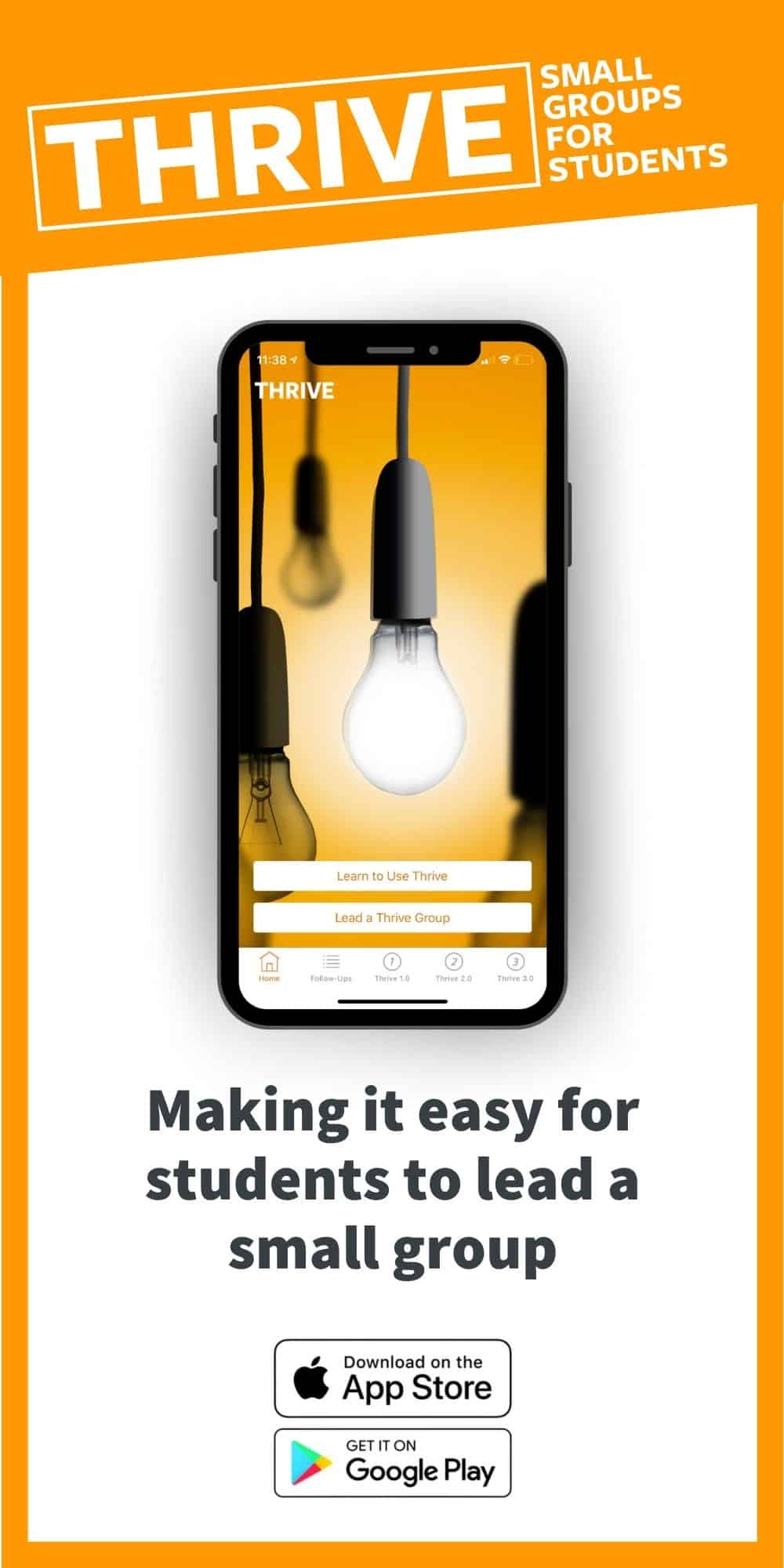Every flourishing student ministry has one thing in common…students! While that may be obvious, how to begin meeting and relating to students isn’t always quite so clear.
So how can we begin to meet and interact with students, in hopes of introducing them to Christ? Let’s explore the biblical basis for taking the initiative in engaging students, as well as the appropriate posture, and a helpful plan to begin building relationships with students on your campus.
The gospel has always traveled through relational channels. Jesus Himself left heaven, “became flesh and blood, and moved into the neighborhood” to pursue lost sinners here on Earth (John 1:14, The Message). Whether it was with Nicodemus, the woman at the well, the blind man, or countless others, Jesus went to where the people were and met them on their turf.
Then He commanded His disciples to do the same (see Luke 10:1-20 and Matthew 28:18-20). For thousands of years, Jesus’ followers have been obeying this command and teaching trustworthy people who can pass the message along to others (2 Timothy 2:2). Incredibly, somewhere in this chain of events, someone helped you come to know and follow Jesus!
And now, Lord willing, you may have the opportunity to help others come to know and follow Christ as you take steps of faith to meet and relate to students on your local campus. To do this, it is important that you consider your posture and develop a plan.
The way that we carry ourselves and interact with others, our relational posture, is critically important as we seek to develop Christ-centered relationships with students. Here are a few things to consider.
Know Your Purpose
Your purpose is to share the gospel broadly and disciple those who respond in faith. A high school campus is a highly relational ecosystem, in which students are connected in a variety of ways (classes, clubs, sports, interests, etc.). You will gain credibility and have opportunities to share Jesus as you relate well to students in this world. Seek to meet as many students as possible. The more students you meet, the more opportunities you will have to share Jesus! As students respond in faith, you will also be able to spread the gospel more broadly through their relational connections.
Be Yourself
Don’t try to be someone you aren’t. God can use a wide variety of people to reach students. Students respond best when you are authentic, sincere, and humbly confident in whom God has made you to be. The most important thing for students is to know that they can trust you and that you genuinely care about them.
Become an Insider
An insider is someone who adjusts their conversations to the students’ interests rather than just your own, meeting them on their turf, not asking them to meet you on yours. Don’t worry; you don’t need to know every latest fad or pop culture reference, but take time to learn the students’ world by asking good questions, listening, and observing. Good questions, genuine curiosity, and loving listening can go a long way toward building trusting relationships and beginning to understand the world of teens on your campus.
Be Casual, but Intentional
To be casual means that it is important to be relaxed and be yourself as you work among students. Enjoy yourself and enjoy them. To be intentional means that you remember your objective: to help the student learn more about a relationship with Jesus, so that they can know and grow in Him. As you relate to students, be prayerful, asking God to help you know how and when to turn your conversation to the student’s spiritual need. You are not there just to be a buddy, but a spiritual leader and mentor. For more perspective on this, check out this great video about relating to students.
Soularium can be a great way to engage students in casual conversation while also seeking to move the conversation toward spiritual truth. Or check out this great article for additional tips for How to Turn a Conversation to Christ.
Good questions, genuine curiosity, and loving listening can go a long way toward building trusting relationships and beginning to understand the world of teens on your campus.
2
Develop a Plan
Now that you have the right posture, it’s equally important that you have a good plan to reach as many students as possible on the campus. To start, here are a few helpful tips to begin the process.
Go to Where Students Are
As we mentioned earlier, when meeting and relating to students, it is important to engage them on their turf. While students have a unique cultural “turf,” they also have a physical turf- the places where they naturally live, learn, and play. School activities, athletic events, and restaurants near the school are all great places to find and interact with students. You may also consider volunteering at the school as a coach or tutor. Wherever students naturally gather, is where you want to be!
Meet Students With Breadth in Mind
The more students you meet, the greater opportunity you have for outreach. One way to meet more students more quickly is to strategically pursue the many natural groups that exist on campus. Mapping Your Campus can be a great strategy to begin to think through these groups and develop a plan for reaching as many students as possible.
Rely on Students You Already Know to Help You Meet Others
Ask students you know to help you meet some of their friends. It may be helpful to make a list of students you already know or who are key leaders in your movement. Challenge them to connect you to their friends over lunch, after school, or in some other setting that feels natural to them. As you attend school activities, ask students to introduce you to their friends or casually take the initiative to introduce yourself.
When hosting ministry events, be sure to consistently encourage students to invite friends and classmates who are not currently involved with your ministry. Introduce yourself to every new student who attends, and see if you can set up a time to meet with them to get to know them better in the coming days.
Be Creative
While we hope this article has provided some guiding principles, we have only begun to scratch the surface on how you can meet students on your campus. Every campus is different, and what works in one place won’t necessarily work in another. Feel free to put your own creativity to work or invite students to come up with a creative idea to connect with their peers. With the right posture and a good plan, who knows what the Lord might do?
So, get out there! There are likely hundreds of students on a campus in your community in desperate need of the gospel. Many of them are primed and ready to begin a relationship with Jesus, if only someone would take the initiative to meet them and share the good news. Take a step of faith and begin meeting them today!
Next Step
Let's practice! A great first step - choose a campus event in the next week, then go and start a conversation with three new students. Pray and ask God to lead you to students in whom He is at work creating spiritual interest. If you uncover spiritual interest, Preparing Yourself for Spiritual Conversations can help you move towards the gospel.
start a conversation









